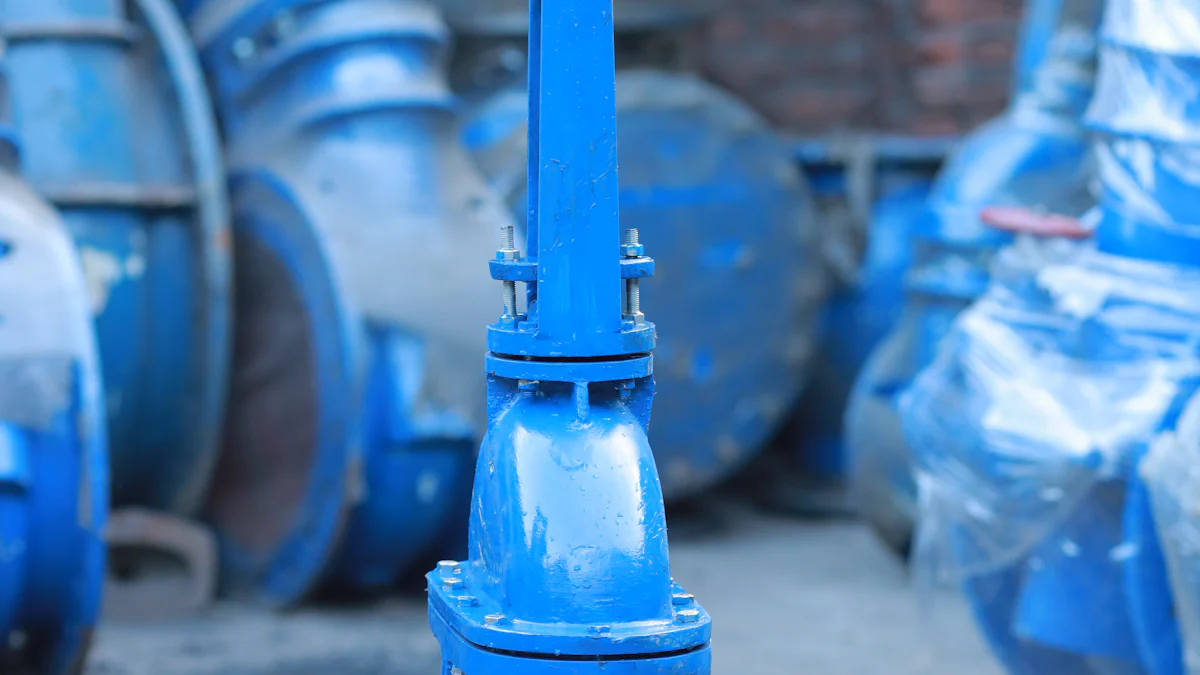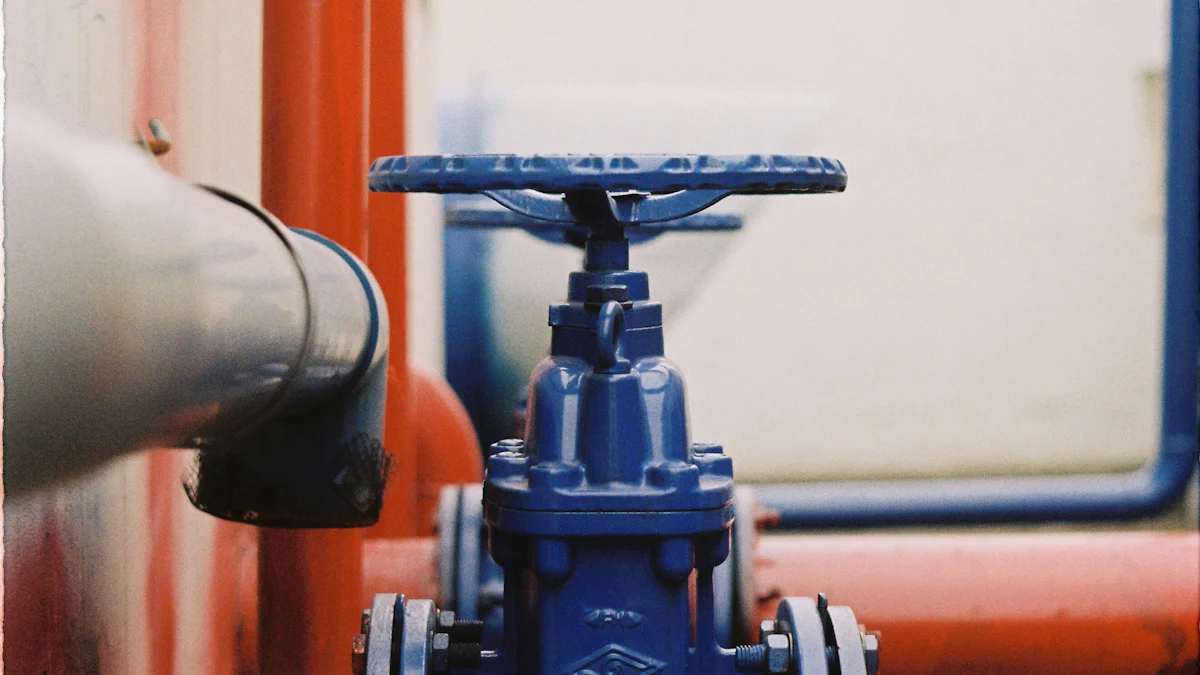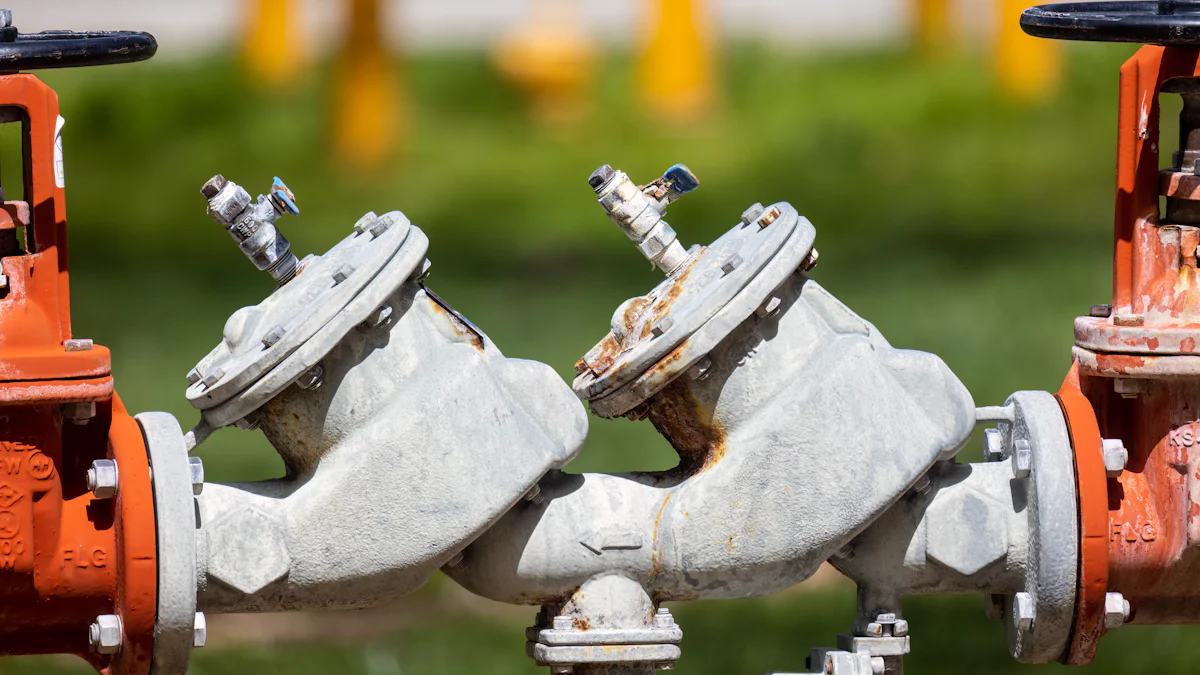
Check valves play a vital role in controlling fluid flow by preventing backflow. They ensure safety and efficiency in systems like water supply networks and chemical pipelines. Industries such as oil and gas rely heavily on these valves. As a trusted check valve supplier, I understand their importance in maintaining operational integrity across diverse applications. Additionally, as a progressive die machining parts supplier, we are committed to providing high-quality components that meet the specific needs of various industries.
Key Takeaways
- Check valves stop fluids from flowing backward. They keep fluids moving one way, protecting machines and improving system work.
- Picking the right check valve means knowing how fluids move, if materials match, and what the system needs. Choosing well makes it work better and safer.
- Taking care of check valves is very important. Checking and cleaning them two times a year helps them last longer and avoids delays.
What Are Check Valves and How Do They Work?
Definition and Basic Functionality
Check valves are essential components in fluid systems. They allow fluid to flow in one direction while preventing reverse flow. I often explain their operation using two fundamental principles. First, the valve opens when the upstream pressure exceeds a specific threshold, known as the cracking pressure. This allows fluid to move forward. Second, the valve closes when the upstream pressure drops below this threshold or when backflow occurs. This mechanism ensures unidirectional flow and protects the system from potential damage.
The materials used in constructing check valves vary depending on the application. For example, PVC and polypropylene resist corrosion, making them ideal for water systems and corrosive fluids. Stainless steel offers durability and resistance to harsh conditions, while brass is commonly used in air, water, and fuel systems. This versatility allows check valves to perform reliably in diverse environments.
Key Benefits of Using Check Valves
Check valves provide several advantages in fluid systems. They maintain efficiency by ensuring unidirectional flow and preventing backflow. This reduces the risk of contamination and equipment damage. I’ve seen how they protect pumps and other equipment from pressure spikes, which can crack pump housings or cause other failures. By blocking pressure surges, they extend the lifespan of critical components.
Another benefit is cost savings. High-quality check valves, such as nozzle check valves, reduce maintenance needs due to their durability. Their efficient design also helps maintain steady flow rates, leading to energy savings. In urban water systems, they prevent stormwater and sewage from flowing back into drainage networks, ensuring public safety. These features make check valves a cost-effective solution for protecting industrial systems and maintaining operational integrity.
Types of Check Valves

Swing Check Valves
Swing check valves have a simple design that makes them easy to maintain. I often recommend them for systems with large, predictable flow rates. These valves use a disc that swings open when fluid flows forward and closes to prevent backflow. They work well in water and wastewater treatment plants, HVAC systems, and industrial applications.
Tip: Swing check valves are ideal for preventing backflow in HVAC systems, ensuring efficient energy use.
Lift Check Valves
Lift check valves operate similarly to globe valves. The disc lifts when fluid pressure pushes upward and falls back to block reverse flow. These valves handle higher pressure drops compared to swing check valves. I find them suitable for systems requiring tight shutoff and precise flow control.
Dual Plate Check Valves
Dual plate check valves are versatile and widely used across industries. Their compact design and lightweight structure make them efficient. For example:
| Industry | Reason for Usage |
|---|---|
| Chemical Processing | Prevents cross-contamination and handles corrosive chemicals safely. |
| Power Generation | Protects turbines from backflow damage and water hammer. |
| Oil and Gas | Ensures efficient crude oil and natural gas processing. |
Non-Slam Check Valves
Non-slam check valves excel in high-pressure systems. They prevent water hammer, maintain fluid pressure, and allow installation in any orientation. I often recommend them for their durability and cost-effectiveness.
Note: Non-slam check valves are automatic and versatile, making them a reliable choice for various applications.
Tilting-Disc Check Valves
Tilting-disc check valves stand out for their unique design. The disc pivots near its center, allowing quick opening and closing. This reduces the risk of water hammer and makes them effective for low or pulsating flows. I’ve seen them perform exceptionally well in systems with variable pressures.
Ball Check Valves
Ball check valves use a spherical ball to block reverse flow. Their compact size makes them perfect for small pumps and systems with limited space. They are commonly used in wastewater treatment and chemical processing.
Spring-Loaded Check Valves
Spring-loaded check valves use a spring mechanism to close the valve when flow stops. This prevents backflow and ensures smooth operation in systems with fluctuating flow rates. I often recommend them for process control systems requiring consistent flow regulation.
Nozzle Check Valves
Nozzle check valves are designed for high-velocity flow systems. Their streamlined structure minimizes pressure loss and turbulence. These valves respond quickly to prevent water hammer, protecting pumps and compressors from damage.
Applications of Check Valves

Water and Wastewater Systems
Check valves are essential in water and wastewater systems. They prevent backflow, ensuring that treated water remains uncontaminated. In wastewater management, these valves stop sewage from flowing back into treatment facilities or homes. This protects the environment and public health. Proper installation at discharge points and pump stations is critical for controlling fluid flow. However, challenges like noise, vibration, and leakage can arise. Selecting the right valve size is crucial. Oversized valves may not close properly, while undersized ones can restrict flow and damage equipment.
Oil and Gas Pipelines
In oil and gas pipelines, check valves enhance safety and efficiency. They ensure fluid flows in one direction, preventing backflow that could damage equipment. These valves protect systems from pressure surges and maintain stability. By incorporating check valves, operators extend the lifespan of their equipment and ensure uninterrupted service. This reliability is vital for maintaining operational efficiency in such critical industries.
HVAC Systems
Check valves play a key role in HVAC systems. They prevent the backflow of fluids, ensuring proper flow direction. This improves system efficiency and protects components from damage. By maintaining consistent flow, these valves enhance overall performance. I often recommend them for HVAC systems to ensure smooth operation and energy efficiency.
Industrial Processing
Industrial processing systems rely on check valves for precise flow control. These valves must meet specific requirements, such as appropriate cracking pressure and material compatibility. Proper sizing is also essential to match the piping and equipment. For example:
| Requirement | Description |
|---|---|
| Flow Conditions | Sufficient pressure must be maintained to keep the valve open under all flow conditions. |
| Valve Location | Prefer horizontal piping for all valves except axial flow check valves; ensure straight piping. |
| Valve Size | Size must be calculated based on minimum, normal, and maximum flow conditions. |
| Valve Material | Material must be compatible with the application (temperature, pressure, corrosion resistance). |
These considerations ensure reliable performance in demanding environments.
Chemical Processing
In chemical processing, check valves prevent contamination by stopping backflow. This is critical when handling different media that must not mix. They also protect upstream equipment, such as pumps and filters, from damage caused by reverse flow. Additionally, check valves help prevent water hammer, which can cause hazardous leaks. Their role in maintaining safety and efficiency makes them indispensable in chemical plants.
Power Generation
Power generation systems depend on check valves for smooth operation. These valves manage flow conditions, ensuring proper pressure and direction. Material compatibility is vital to prevent corrosion, especially in high-temperature environments. Proper sizing and installation minimize turbulence and wear. By selecting the right valve, operators reduce maintenance needs and improve system longevity. This makes check valves a cost-effective solution for power plants.
How to Choose the Right Check Valve
Understanding Flow Conditions
Choosing the right check valve starts with understanding your system's flow conditions. I always recommend evaluating three key factors:
- Define the application and media requirements. For example, hydraulic systems may need different valves than chemical processing systems.
- Assess the system's pressure and temperature to ensure the valve can handle maximum operating conditions.
- Evaluate the flow rate to avoid turbulence or excessive pressure drops.
It’s crucial to match the valve type to your system. For instance, lift check valves work well in high-pressure systems, while swing check valves are better for low-pressure applications.
Material Compatibility
Material compatibility directly impacts a valve's performance and lifespan. I always advise selecting materials that resist corrosion and wear. For example:
- Stainless steel suits harsh environments.
- PVC works well with corrosive fluids.
- Brass is ideal for air and water systems.
Using incompatible materials can lead to cracking or deterioration, which shortens the valve's lifespan. Always consider the media and environmental conditions when choosing materials.
Maintenance and Durability Considerations
Regular maintenance ensures reliable valve performance. I recommend inspecting valves twice a year to check for debris or wear. Clean the parts thoroughly and replace damaged components promptly. If a valve fails to open or close, inspect for obstructions or foreign material. For noisy operation, installing a water hammer arrestor can help. Proper maintenance extends the valve's durability and reduces downtime.
Cost and Efficiency Factors
Cost and efficiency play a significant role in valve selection. I always evaluate these factors:
| Cost Factor | Description |
|---|---|
| Purchase Price | Initial cost of acquiring the check valve. |
| Maintenance Costs | Long-term expenses related to upkeep and repairs. |
| Energy Costs | Costs associated with energy consumption, influenced by valve efficiency. |
| Simple Valve Construction | Generally requires less maintenance, leading to lower long-term costs. |
| Kv Value | Higher Kv value indicates lower energy consumption, enhancing efficiency. |
A reliable valve minimizes maintenance and energy costs, ensuring long-term operational efficiency.
Importance of Consulting a Reliable Check Valve Supplier
Working with a trusted check valve supplier simplifies the selection process. They provide expertise in valve sizing and configuration. I often rely on their guidance to match valves to specific applications. A good supplier offers technical support, quality assurance, and access to a wide range of products. This ensures safety, efficiency, and improved system performance.
Understanding the different types of check valves ensures proper system performance and safety. Selecting the right valve prevents backflow, protects equipment, and reduces maintenance costs. Working with a trusted supplier simplifies this process. They provide expert guidance, ensuring compatibility with system requirements and delivering high-quality products for reliable operation.
FAQ
What is the main purpose of a check valve?
A check valve prevents backflow in a system. It ensures fluid flows in one direction, protecting equipment and maintaining system efficiency.
How do I know which check valve to choose?
I recommend evaluating flow conditions, material compatibility, and system requirements. Consulting a reliable supplier simplifies the selection process.
Can check valves reduce water hammer?
Yes! Non-slam and nozzle check valves minimize water hammer by closing smoothly. This protects pipes and equipment from damage caused by pressure surges.
Send your message to us:
Post time: Jan-27-2025